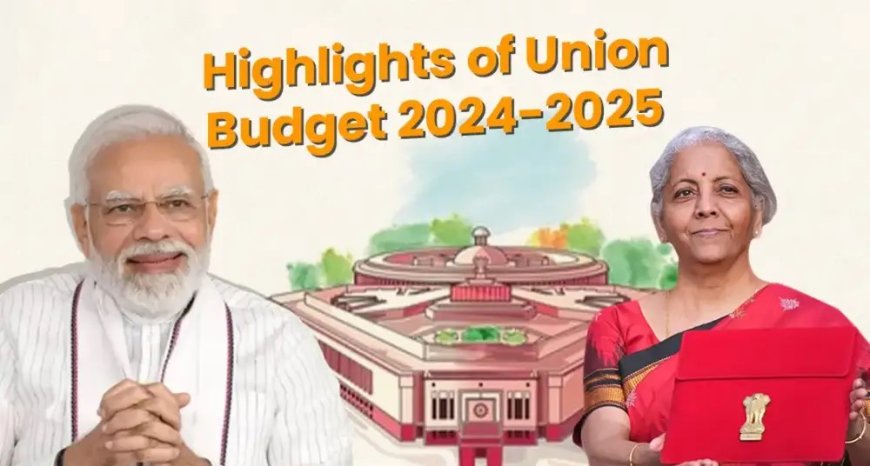Navigating Transition: Unraveling the Significance and Contents of Interim Budgets
Interim Budgets, often overlooked amidst the political fervor of general elections, stand as pivotal moments in a nation's fiscal trajectory. These financial blueprints, albeit temporary in nature, hold immense significance, serving as bridges between outgoing and incoming administrations. In this comprehensive exploration, we delve deeper into the layers of Interim Budgets, unraveling their significance, contents, and the intricate tapestry of socio-economic initiatives they encompass.

Introduction
Understanding the Significance of Interim Budgets
Deciphering the Contents of Interim Budgets
The potential future of Interim Budgets based on the insights gleaned
Conclusion
Introduction-
Interim Budgets, often overlooked amidst the political fervor of general elections, stand as pivotal moments in a nation's fiscal trajectory. These financial blueprints, albeit temporary in nature, hold immense significance, serving as bridges between outgoing and incoming administrations. In this comprehensive exploration, we delve deeper into the layers of Interim Budgets, unraveling their significance, contents, and the intricate tapestry of socio-economic initiatives they encompass.
Understanding the Significance of Interim Budgets
Interim Budgets, by virtue of their transitional nature, embody a delicate balance between governance continuity and political expediency. While ensuring the smooth functioning of essential services and expenditures, they also provide outgoing governments with a platform to showcase their achievements and policy legacies. However, constrained by electoral protocols, Interim Budgets refrain from introducing major policy shifts or financial burdens that could encumber the incoming administration. Thus, they serve as testaments to the resilience of governance amidst transitions in leadership, navigating the contours of uncertainty with sagacity and foresight.
Deciphering the Contents of Interim Budgets
Infrastructure and Development Initiatives:
Interim Budgets allocate substantial resources towards infrastructure development projects, ranging from transportation networks to urban rejuvenation schemes. Initiatives like the Bharatmala project for road connectivity and Smart Cities Mission exemplify the government's commitment to fostering sustainable urbanization and enhancing connectivity across regions.
Digital Transformation and Technological Innovation:
Recognizing the transformative potential of technology, Interim Budgets prioritize investments in digital infrastructure and innovation-driven initiatives. Schemes like Digital India and Startup India aim to harness the power of technology to drive economic growth, empower citizens, and foster entrepreneurship.
Financial Inclusion and Banking Reforms:
In a bid to promote financial inclusion and deepen the banking sector's penetration, Interim Budgets introduce measures to expand access to banking services and enhance financial literacy. Programs like Jan Dhan Yojana and Pradhan Mantri Mudra Yojana facilitate greater participation of
Environmental Sustainability and Climate Action:
Interim Budgets prioritize environmental sustainability and climate resilience, allocating resources towards renewable energy projects, conservation efforts, and climate adaptation initiatives. Schemes such as the National Clean Air Programme and the Green India Mission underscore the government's commitment to addressing environmental challenges and promoting sustainable development practices.
Healthcare Infrastructure and Public Health Initiatives:
Amidst the backdrop of global health crises and emerging diseases, Interim Budgets allocate significant resources towards strengthening healthcare infrastructure and bolstering public health initiatives. Investments in healthcare facilities, disease surveillance systems, and vaccination programs reflect the government's proactive approach to safeguarding public health and ensuring healthcare access for all citizens.
Education and Skill Development:
Recognizing education as a cornerstone of human capital development, Interim Budgets prioritize investments in education infrastructure, teacher training programs, and skill development initiatives. Schemes like the National Education Policy and Skill India Mission aim to equip citizens with the knowledge and skills needed to thrive in a rapidly evolving global economy.
The potential future of Interim Budgets based on the insights gleaned:
Continued Significance in Governance:
Interim Budgets are likely to retain their significance as crucial instruments for maintaining governance continuity during periods of political transition. As demonstrated in the provided data, these budgets serve as essential mechanisms for ensuring the smooth functioning of essential services and government expenditures, thereby upholding stability and continuity in governance.
Platform for Policy Showcase:
Interim Budgets are expected to continue serving as platforms for outgoing governments to showcase their achievements, policy legacies, and future visions. By highlighting their socio-economic initiatives and developmental milestones, governments seek to influence voter sentiment and shape public perception in the run-up to general elections.
Emphasis on Inclusive Growth and Welfare:
The future of Interim Budgets is likely to witness a sustained emphasis on inclusive growth and welfare-oriented policies. As evident from the provided data, these budgets prioritize allocations towards social welfare programs, education, healthcare, and poverty alleviation initiatives, reflecting a commitment to addressing socio-economic disparities and fostering inclusive development.
Focus on Key Socio-Economic Sectors:
Interim Budgets are expected to continue prioritizing investments in key socio-economic sectors such as infrastructure, healthcare, education, and agriculture. These allocations aim to bolster economic resilience, enhance public service delivery, and promote sustainable development, thereby addressing pressing challenges and meeting the evolving needs of society.
Adherence to Electoral Protocols:
Interim Budgets will likely adhere to electoral protocols and principles of governance continuity, refraining from introducing major policy changes or financial burdens that could encumber incoming administrations. By maintaining fiscal prudence and avoiding controversial measures, these budgets seek to uphold democratic norms and facilitate smooth transitions of power.
Adaptation to Changing Dynamics:
While the fundamental role of Interim Budgets remains consistent, their future trajectory may witness adaptation to changing political, economic, and social dynamics. Governments may tailor their budgetary priorities and messaging to align with evolving voter preferences, emerging challenges, and global trends, ensuring relevance and effectiveness in governance.
Conclusion: Forging Paths Towards Resilient Futures
Interim Budgets, though transient in nature, leave indelible imprints on a nation's socio-economic landscape, shaping trajectories of growth and development. As governments navigate the complexities of political transitions, these budgets serve as guiding compasses, charting courses towards resilient and equitable futures. Through their allocations and priorities, Interim Budgets embody the aspirations of nations, weaving narratives of progress, inclusivity, and sustainability amidst the ebb and flow of change.




